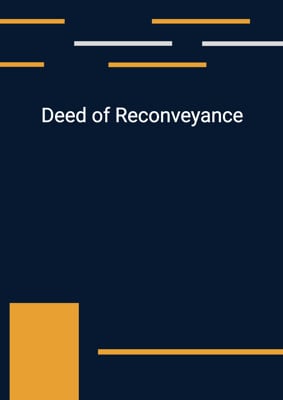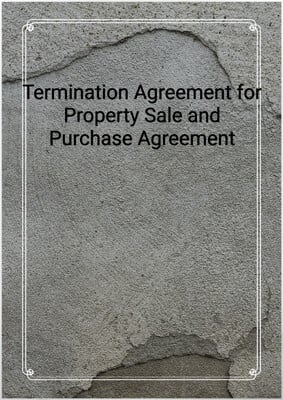How to Tailor the Document for Your Need?
01
Create Document
Fill in the details of the parties. You can click the "Fill with Member’s Information" button to complete it with information saved to your account.
02
Fill Information
Please fill in any additional information by following the step-by-step guide on the left hand side of the preview document and click the "Next" button.
03
Get Document
When you are done, click the "Get Document" button and you can download the document in Word or PDF format.
04
Review Document
Please get all parties to review the document carefully and make any final modifications to ensure that the details are correct before signing the document.
Document Preview
Document Description
The Property Sale and Purchase Agreement is a legal document that outlines the terms and conditions for the sale and purchase of a property. It is an important document as it serves as a binding contract between the vendor (seller) and the purchaser (buyer), ensuring that both parties are aware of their rights and obligations.
The entire document consists of several sections, each addressing specific aspects of the sale and purchase process. The first section, titled 'Premises,' establishes the agreement between the vendor and the purchaser to sell and purchase the property. It includes a detailed description of the property, including any buildings, fixtures, and appliances that are included in the sale.
The next section, titled 'Consideration,' specifies the purchase price of the property and the payment terms. It outlines the initial deposit that the purchaser must pay upon signing the contract, as well as any further deposits and the balance payment that must be made upon completion of the purchase.
The completion date section states the date by which the balance payment must be made. It also includes a provision for the deposit to be held by the vendor's lawyers as stakeholders, ensuring that the balance payment is sufficient to discharge any existing legal charges or mortgages on the property.
The section on encumbrances and latent defects ensures that the property is sold free from any encumbrances and that the vendor has disclosed any known latent defects. It also provides the purchaser with the right to inspect the property and request the vendor to remedy any unsatisfactory conditions.
The vacant possession section specifies whether the vendor must deliver vacant possession of the property to the purchaser upon completion or if the property is subject to an existing tenancy. The selling as confirmor section indicates whether the vendor is selling the property as a confirmor.
The lawyers and stamp duty section states that both the vendor and the purchaser must appoint their own lawyers. It also specifies that each party is responsible for their own legal costs, and the purchaser is solely responsible for paying the stamp duty.
The sections on purchaser fails to perform and vendor fails to perform outline the consequences if either party fails to fulfill their obligations under the contract. If the purchaser fails to complete the purchase, the initial deposit is forfeited to the vendor, and the vendor has the right to sell the property to another buyer. If the vendor fails to complete the sale, they must compensate the purchaser and refund the initial deposit.
The as-is basis section clarifies that the property is sold in its current condition, without any warranties or guarantees from the vendor. The prior negotiation section states that the contract supersedes any previous negotiations or agreements between the parties.
The chattels section specifies that the sale and purchase include any chattels, furniture, and fittings listed in the attached schedule. The residential or non-residential section certifies whether the transaction relates to residential or non-residential premises for stamp duty purposes.
The certificate of value section certifies that the transaction does not exceed a certain amount. The transfer taxes/utilities/pro-rations/heating fuel section outlines the apportionment of transfer taxes, utilities, and other charges at the time of settlement. The severability section states that if any provision of the contract is deemed illegal or unenforceable, it will be removed without invalidating the remaining provisions.
The investment disclosure section discloses that the purchaser may be purchasing the property as an investment and may resell or assign the contract. The entire agreement section confirms that the contract represents the entire agreement between the parties and supersedes any previous agreements. It also clarifies that neither party has relied on any representations or warranties not included in the contract, and any liability for misrepresentation is excluded.
The insurance section states that the risk of loss or damage to the property remains with the vendor until the deed of conveyance is recorded. The interpretation section specifies that the English version of the contract will prevail in case of any ambiguities.
How to use this document?
1. Provide information: Enter the vendor's and purchaser's information in the agreement, including their principal place of business. This ensures that both parties are clearly identified.
2. Specify the purchase price and payment terms: Clearly specify the agreed purchase price of the property and the payment terms, including the initial deposit, further deposits, and balance payment. This ensures that both parties are aware of the financial obligations.
3. Describe the property: Provide a detailed description of the property, including any buildings, fixtures, and appliances that are included in the sale. This helps avoid any misunderstandings about the scope of the sale.
4. Address encumbrances and latent defects: Ensure that the property is sold free from any encumbrances and that the vendor has disclosed any known latent defects. This protects the purchaser's interests and allows them to request remedies for unsatisfactory conditions.
5. Clarify possession status: Specify whether the vendor must deliver vacant possession of the property to the purchaser upon completion or if the property is subject to an existing tenancy. This avoids any confusion about the possession rights.
6. Appoint lawyers and determine stamp duty: Both the vendor and the purchaser should appoint their own lawyers to represent them. Each party is responsible for their own legal costs, and the purchaser is solely responsible for paying the stamp duty.
7. Address failure to perform: Outline the consequences if either party fails to fulfill their obligations under the contract. Specify the forfeiture of the initial deposit and the right to sell the property to another buyer if the purchaser fails to complete the purchase. Also, specify the compensation and refund of the initial deposit if the vendor fails to complete the sale.
8. Clarify the condition of the property: State that the property is sold on an 'as is' basis, without any warranties or guarantees from the vendor. This sets clear expectations for the purchaser.
9. Include necessary certifications: Certify whether the transaction relates to residential or non-residential premises for stamp duty purposes. Also, certify that the transaction does not exceed a certain value.
10. Address transfer taxes and utilities: Specify that the purchaser is responsible for paying transfer taxes and fees. Apportion other charges, such as utilities and lienable charges, at the time of settlement. Also, clarify the responsibility for heating fuel and deed preparation.
11. Ensure severability: Include a provision stating that if any provision of the contract is deemed illegal or unenforceable, it will be removed without invalidating the remaining provisions.
12. Disclose investment intentions: Disclose if the purchaser may be purchasing the property as an investment and may resell or assign the contract. Specify any arrangements for accessing the property for showing purposes.
13. Confirm the entire agreement: State that the contract represents the entire agreement between the parties and supersedes any previous agreements. Clarify that neither party has relied on any representations or warranties not included in the contract.
14. Address insurance: Specify that the risk of loss or damage to the property remains with the vendor until the deed of conveyance is recorded.
15. Interpretation: Clarify that the English version of the contract will prevail in case of any ambiguities.
Not the right document?
Don’t worry, we have thousands of documents for you to choose from:














